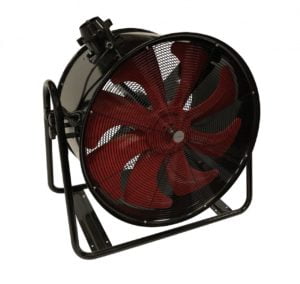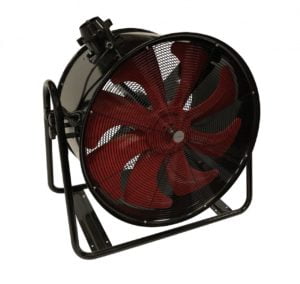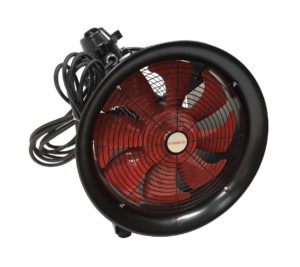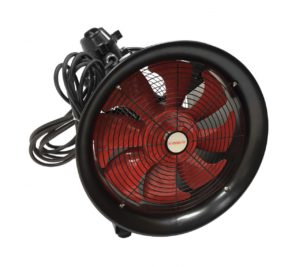Class 1 Division 1 Fan
Showing all 4 resultsSorted by popularity
-
%22%20transform%3D%22translate(.6%20.6)%20scale(1.17188)%22%20fill-opacity%3D%22.5%22%3E%3Cellipse%20rx%3D%221%22%20ry%3D%221%22%20transform%3D%22matrix(-73.26441%2041.11407%20-38.18907%20-68.05212%20130%20105)%22%2F%3E%3Cellipse%20fill%3D%22%23fff%22%20rx%3D%221%22%20ry%3D%221%22%20transform%3D%22matrix(-253.8683%2023.99762%20-3.28395%20-34.74057%20147%20220)%22%2F%3E%3Cellipse%20fill%3D%22%23fff%22%20cx%3D%2218%22%20cy%3D%2280%22%20rx%3D%2223%22%20ry%3D%22255%22%2F%3E%3Cellipse%20fill%3D%22%23fff%22%20rx%3D%221%22%20ry%3D%221%22%20transform%3D%22rotate(-.3%2019853.7%20-38271.2)%20scale(29.1301%20255.00004)%22%2F%3E%3C%2Fg%3E%3C%2Fsvg%3E)
Atlantic Blowers ABAF-20-110E Explosion Proof Fan
$1,75599 -
%22%20transform%3D%22translate(.6%20.6)%20scale(1.17188)%22%20fill-opacity%3D%22.5%22%3E%3Cellipse%20rx%3D%221%22%20ry%3D%221%22%20transform%3D%22matrix(-37.06118%20-70.25617%2074.25426%20-39.17023%20128.5%20105.9)%22%2F%3E%3Cellipse%20fill%3D%22%23fff%22%20rx%3D%221%22%20ry%3D%221%22%20transform%3D%22matrix(-5.20452%20-39.00603%20252.75993%20-33.72538%20149.7%20219)%22%2F%3E%3Cellipse%20fill%3D%22%23fff%22%20rx%3D%221%22%20ry%3D%221%22%20transform%3D%22rotate(90.1%20-24%2040.1)%20scale(255%2025.44236)%22%2F%3E%3Cellipse%20fill%3D%22%23fff%22%20cx%3D%22241%22%20cy%3D%2299%22%20rx%3D%2224%22%20ry%3D%22255%22%2F%3E%3C%2Fg%3E%3C%2Fsvg%3E)
Explosion Proof Fan Atlantic Blowers ABAF-32-110E
$3,80000 -
%22%20transform%3D%22translate(.6%20.6)%20scale(1.17188)%22%20fill-opacity%3D%22.5%22%3E%3Cellipse%20fill%3D%22%231d0000%22%20rx%3D%221%22%20ry%3D%221%22%20transform%3D%22matrix(-80.66339%20-21.146%2019.0918%20-72.82741%20132.1%20109.1)%22%2F%3E%3Cellipse%20fill%3D%22%23fff%22%20rx%3D%221%22%20ry%3D%221%22%20transform%3D%22matrix(-32.53772%20-247.14854%2039.50404%20-5.2008%2025.3%20138.1)%22%2F%3E%3Cellipse%20fill%3D%22%23fff%22%20rx%3D%221%22%20ry%3D%221%22%20transform%3D%22matrix(-30.38957%20-3.10647%2025.93141%20-253.67807%20235.2%20146)%22%2F%3E%3Cellipse%20fill%3D%22%23fff%22%20cx%3D%22129%22%20cy%3D%2212%22%20rx%3D%22255%22%20ry%3D%2215%22%2F%3E%3C%2Fg%3E%3C%2Fsvg%3E)
Explosion Proof Fan Atlantic Blowers ABAF-16-220E
$1,15815 -
%27%20fill-opacity%3D%27.5%27%3E%3Cellipse%20fill%3D%22%231c0000%22%20fill-opacity%3D%22.5%22%20rx%3D%221%22%20ry%3D%221%22%20transform%3D%22rotate(105.1%2028.5%20125.1)%20scale(87.06207%2097.33983)%22%2F%3E%3Cellipse%20fill%3D%22%23fff%22%20fill-opacity%3D%22.5%22%20rx%3D%221%22%20ry%3D%221%22%20transform%3D%22rotate(-96.3%20113.1%2087.7)%20scale(298.82812%2044.6563)%22%2F%3E%3Cellipse%20fill%3D%22%23fff%22%20fill-opacity%3D%22.5%22%20rx%3D%221%22%20ry%3D%221%22%20transform%3D%22matrix(-35.39725%20296.72425%20-37.5702%20-4.48188%20281.4%20135.2)%22%2F%3E%3Cellipse%20fill%3D%22%23fff%22%20fill-opacity%3D%22.5%22%20rx%3D%221%22%20ry%3D%221%22%20transform%3D%22matrix(-298.4342%20-15.33855%201.21845%20-23.7068%20185.8%2011)%22%2F%3E%3C%2Fg%3E%3C%2Fsvg%3E)
Explosion Proof Fan Atlantic Blowers ABAF-12-220E
$99563
- Class 1 Division 1 fans are essential for safety in hazardous environments like Oil & Gas, Chemical, and Pharmaceutical industries where flammable gases or vapors may be present.
- These fans are designed with explosion-proof features, non-corrosive materials, and advanced safety technologies to operate reliably in high-risk areas.
- Regular maintenance, including inspections, cleaning, lubrication, and performance testing, is crucial to ensure the safe and efficient operation of Class 1 Division 1 fans.
Class 1 Division 1 Fan
In the heart of industries where safety cannot be compromised, the demand for equipment that meets the highest standards of protection and efficiency is paramount. For workers operating in hazardous environments—such as those found in Oil & Gas, Chemical, and Pharmaceutical sectors—the choice of every tool and device can mean the difference between a regular day at work and a potentially hazardous situation. The Class 1 Division 1 fan represents a pinnacle of safety and operational excellence, designed specifically for environments where flammable gases, vapors, or liquids might be present.
At The Intrinsically Safe Store, we understand the critical nature of providing equipment that not only meets but exceeds safety standards. That’s why we specialize in offering a wide range of intrinsically safe and hazardous area products, including the unparalleled Class 1 Division 1 fan. Our commitment to operational excellence, combined with our dedication to ensuring the safety and success of our customers, guides our selection of products designed to empower frontline workers in creating safer, more efficient, and effective work environments.
This article aims to provide a comprehensive overview of the Class 1 Division 1 fan, highlighting its importance, key features, and applications in hazardous industries. Whether you’re a seasoned professional in the field or new to working in hazardous environments, understanding the role and benefits of this critical piece of equipment can make a significant difference in your daily operations. Let’s dive into what makes the Class 1 Division 1 fan an essential tool for safety-conscious industries.
Understanding the Class 1 Division 1 Specification
When navigating the selection of equipment for hazardous areas, understanding the specific classifications and standards is vital for ensuring safety and compliance. The “Class 1 Division 1” (C1D1) designation is a critical specification workers and safety managers in industries such as Oil & Gas, Chemical, and Pharmaceutical must be familiar with.
The C1D1 rating is defined by the National Electrical Code (NEC) in the United States, which categorizes this specification under environments that present a high risk of explosion due to the presence of flammable gases, vapors, or liquids. Class 1 environments are those which contain flammable gases or vapors, and Division 1 specifies that these hazardous substances are present during normal operations or routine maintenance.
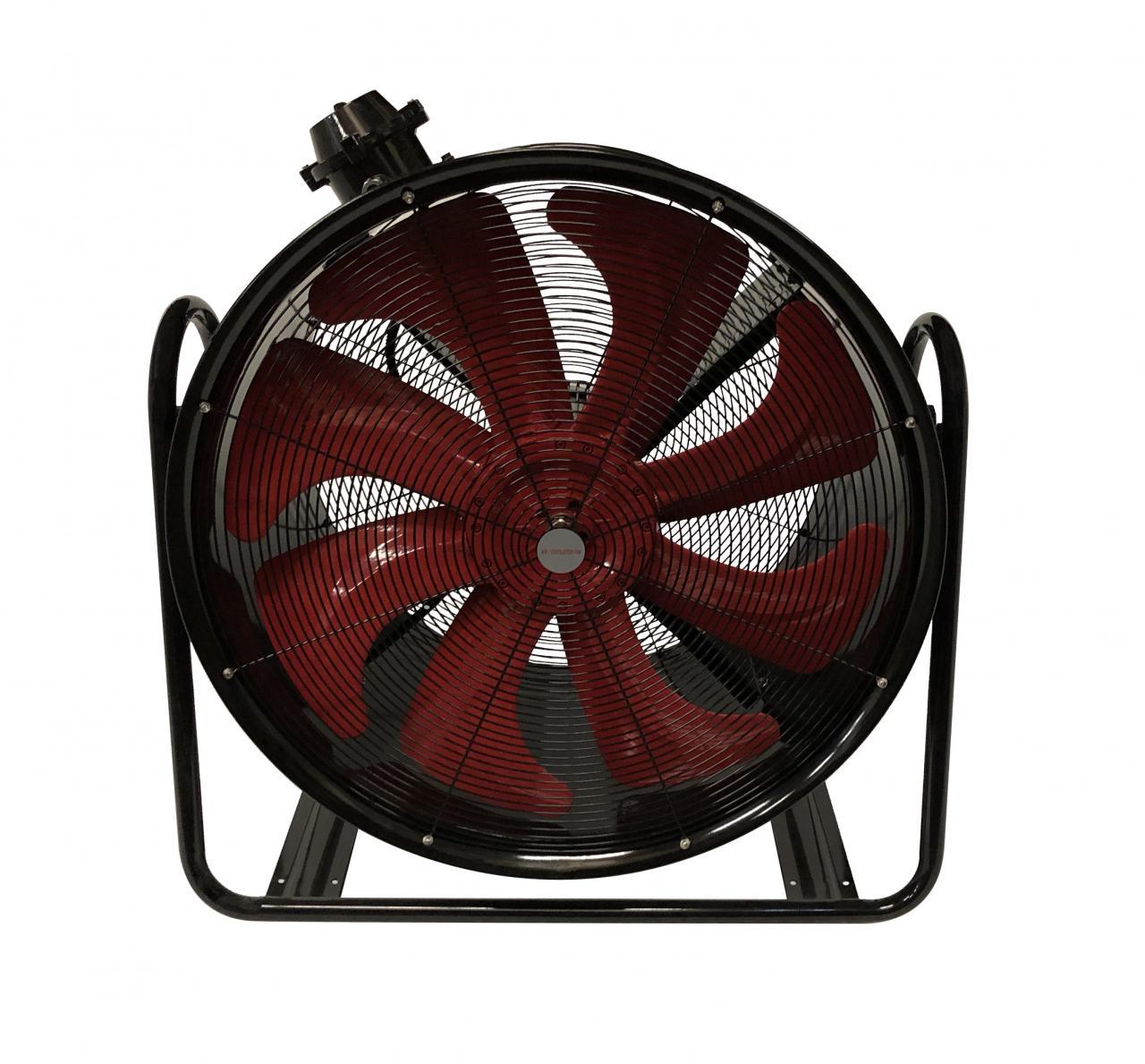 A Class 1 Division 1 fan, therefore, is designed and certified to operate safely within these environments where the explosive atmosphere is almost always present. These fans are constructed with safety at the forefront, including features such as spark-resistant materials, explosion-proof motors, and special seals and finishes that mitigate the risk of igniting a hazardous atmosphere.
A Class 1 Division 1 fan, therefore, is designed and certified to operate safely within these environments where the explosive atmosphere is almost always present. These fans are constructed with safety at the forefront, including features such as spark-resistant materials, explosion-proof motors, and special seals and finishes that mitigate the risk of igniting a hazardous atmosphere.
For workers in hazardous environments, selecting a C1D1 certified fan is non-negotiable. It not only ensures the safety of operations but also helps in maintaining compliance with strict industry regulations and standards.
Using C1D1 certified equipment is a testament to a company’s commitment to operational excellence and safety. At The Intrinsically Safe Store, we understand the critical nature of this classification and offer a range of intrinsically safe and explosion-proof equipment, including C1D1 fans, that meet these stringent requirements. Our products are designed to ensure your work in hazardous environments is not only effective but, more importantly, safe. By prioritizing the use of intrinsically safe equipment, we empower frontline workers to create safer and more efficient work environments, upholding our motto and value proposition to the highest standards.
Design and Construction of Class 1 Division 1 Fans
Class 1 Division 1 fans are designed with safety, durability, and performance in mind to meet the stringent requirements of hazardous environments. Constructed to operate within Class 1, Division 1 areas, these fans can safely function in atmospheres where flammable gases, vapors, or liquids might be present under normal operating conditions. This section highlights the essential design considerations and construction features that make these fans indispensable in high-risk industries.
Materials and Technologies
The materials used in the construction of Class 1 Division 1 fans are selected based on their ability to resist corrosion, withstand extreme temperatures, and prevent sparks. Typically, manufacturers use high-grade aluminum, stainless steel, or other non-corrosive metals that offer durability and long-term integrity in challenging conditions. Additionally, these fans incorporate advanced technologies, including explosion-proof motors and anti-static fan blades, to mitigate the risk of ignition sources.
Safety Features
To comply with the rigorous standards set forth for Class 1 Division 1 devices, these fans are equipped with several safety features. Explosion-proof enclosures house the motor and electrical components, effectively isolating any potential sparks or high-temperature surfaces from the hazardous environment. Moreover, thermal overload protection is often built-in to prevent overheating, a critical consideration in areas where temperature control is vital for safety.
Performance and Efficiency
Despite the focus on safety and durability, there is no compromise on the performance and efficiency of Class 1 Division 1 fans. Engineers design these fans to deliver optimal airflow and cooling capabilities required for various operations in hazardous environments. High-efficiency motors and aerodynamically designed blades ensure that the fans operate effectively, reducing energy consumption and operational costs without sacrificing performance.
Customization and Compatibility
Understanding that hazardous environments vary widely, manufacturers of Class 1 Division 1 fans offer customization options to meet specific industry needs. From different sizes and airflow capacities to selectable motor voltages and mount types, these fans can be tailored to fit the unique requirements of each facility. Compatibility with existing safety and operational systems is also a priority, ensuring seamless integration into hazardous area workspaces.
The design and construction of Class 1 Division 1 fans embody a commitment to safety, performance, and adaptability. By prioritizing these aspects, The Intrinsically Safe Store ensures that workers in Oil & Gas, Chemical, and Pharmaceutical industries, among others, have access to cooling solutions that meet the highest standards of intrinsically safe operation.
Where Class 1 Division 1 Fans Are Essential
Class 1 Division 1 (C1D1) fans are vital in industries where safety and air purity are paramount. These environments are often characterized by the presence of flammable gases, vapors, or finely pulverized dust, where the risk of explosion or fire is significant if these substances were to come into contact with an ignition source. The design and manufacturing of C1D1 fans adhere to stringent regulations to ensure they do not become sources of ignition in these hazardous areas. Here are key sectors where C1D1 fans play an essential role:
Oil & Gas Industry
The oil and gas sector, with its intricate processing operations, storage, and transportation of highly flammable materials, stands out as a primary environment where C1D1 fans are not just beneficial but necessary. In areas such as drilling sites, refineries, and petrochemical plants, these fans are used to prevent the accumulation of explosive gases, ensuring a safe environment for workers and equipment.
Chemical Manufacturing
Chemical plants are rife with processes that release volatile organic compounds (VOCs) and other hazardous substances. Effective ventilation and air control are critical to maintain worker safety and prevent the buildup of explosive atmospheres. C1D1 fans are deployed in these settings to provide continuous air exchange and control, mitigating the risk of an accidental explosion.
Pharmaceutical Industries
The production of pharmaceuticals involves the use of various chemicals and processes that can produce explosive dust or vapors. In areas where these substances are handled, processed, or stored, C1D1 fans are essential to maintain clean air and eliminate potential ignition sources, thereby safeguarding both the facility and its personnel.
Waste Treatment Facilities
Waste treatment and disposal sites, particularly those handling organic materials, generate methane and other flammable gases. These facilities use C1D1 fans to ventilate enclosed spaces, ensuring that gas concentrations remain below levels that could ignite and cause a fire or explosion.
Grain Storage and Processing
The agriculture sector, especially within grain storage and milling operations, faces a high risk of dust explosions. Dust from wheat, corn, and other grains can become an explosive atmosphere if not properly managed. C1D1 fans are crucial in these environments to disperse dust and maintain air quality, significantly reducing the risk of combustion.
 In summary, Class 1 Division 1 fans are indispensable in any operation where hazardous gases, vapors, or dusts are a concern. These fans are a critical component of an integrated safety system, working alongside other safety measures to protect facilities, assets, but most importantly, human lives. Through their use, businesses in hazardous industries can ensure compliance with safety standards while promoting a culture of safety and operational excellence.
In summary, Class 1 Division 1 fans are indispensable in any operation where hazardous gases, vapors, or dusts are a concern. These fans are a critical component of an integrated safety system, working alongside other safety measures to protect facilities, assets, but most importantly, human lives. Through their use, businesses in hazardous industries can ensure compliance with safety standards while promoting a culture of safety and operational excellence.
Maintenance Requirements for Class 1 Division 1 Fans
Maintaining Class 1 Division 1 fans is crucial to ensuring they operate safely and efficiently within hazardous environments. Regular maintenance not only prolongs the life of the equipment but also helps in preventing potential operational failures that could lead to unsafe conditions. Here are key maintenance requirements to consider:
Routine Inspections
Regular inspections are essential to detect any early signs of wear or damage. Inspect the fan blades, housing, and motor for any signs of corrosion, cracks, or other damages. Ensure that all components are securely attached and that there are no loose connections.
Cleaning
Accumulated dust and debris can hinder the performance of Class 1 Division 1 fans. It is important to clean the fan blades and the motor housing regularly to ensure optimal airflow and to prevent overheating. Use non-abrasive, explosion-safe cleaning agents and tools to avoid damaging the equipment.
Lubrication
Proper lubrication of the fan’s motor and moving parts is necessary to reduce friction and wear. Use lubricants that are approved for use in hazardous locations to prevent any chemical reactions that could compromise the safety of the environment.
Electrical Checks
Regularly check the electrical connections and components for signs of wear or damage. Ensure that all wiring is intact and securely connected. Inspect the grounding system to ensure it is functioning properly, as this is vital for the safe operation of electrical equipment in hazardous areas.
Calibration and Performance Testing
Periodically, it is important to test the fan’s performance to ensure it is operating within the specified parameters. This includes checking the airflow, speed, and any other critical operational metrics. Calibration may also be necessary to ensure the fan’s sensors and controls are functioning correctly.
Record Keeping
Maintain detailed records of inspections, maintenance activities, and any repairs or replacements. This documentation is crucial for monitoring the fan’s condition over time and for ensuring compliance with safety regulations and standards.
Following these maintenance guidelines helps in keeping Class 1 Division 1 fans in optimal working condition, thus ensuring the safety and efficiency of operations in hazardous environments. The Intrinsically Safe Store is committed to providing not only the equipment but also the knowledge and support needed to maintain the safety standards in such critical operations.
Making the Right Choice for Your Needs
When it comes to ensuring safety in hazardous environments, choosing the right Class 1 Division 1 fan is crucial. These fans are specifically designed to operate in the most stringent atmospheres where the presence of flammable gases or vapors can lead to explosive conditions. The importance of selecting a fan that is not only efficient but also compliant with safety standards cannot be overstressed.
Why a Class 1 Division 1 Fan?
Class 1 Division 1 fans are certified to meet the strict requirements for use in areas classified as having an explosive atmosphere under normal operational conditions. These are environments where highly volatile substances are processed or manufactured, such as in the Oil & Gas, Chemical, and Pharmaceutical industries. The primary consideration for any equipment in these sectors is intrinsic safety – a principle that guides the design and operation of all our products at The Intrinsically Safe Store.
Considerations for Selection
When selecting a Class 1 Division 1 fan for your needs, consider the following factors:
- Environment: Understand the specific characteristics of the hazardous area, including the types of gases or vapors present and their concentrations. This will determine the explosion-proof rating required for the fan.
- Airflow Requirements: Assess the volume and pressure of air that needs to be circulated or exhausted from the area. This ensures the fan can provide adequate ventilation for safety and operational efficiency.
- Durability and Maintenance: Look for fans constructed with high-quality materials that offer corrosion resistance, especially in harsh industrial environments. Also, consider ease of maintenance to ensure long-term reliability and performance.
- Support and Training: Ensure that you have access to comprehensive support and training for the installation and operation of your fan. At The Intrinsically Safe Store, we not only supply the equipment but also provide extensive training to ensure customer success.
Empowering Frontline Workers
Making the right choice in selecting a Class 1 Division 1 fan is about more than just meeting compliance standards; it’s about empowering frontline workers to maintain a safer, more efficient, and effective work environment. Our commitment is to provide you with the tools, training, and support to make informed decisions that enhance operational excellence and ensure the safety of all personnel.
Choosing the appropriate equipment requires careful consideration of your specific needs and the challenges you face in hazardous environments. We’re here to support you every step of the way, with a focus on open communication and a dedication to operational excellence. Let us help you create a safer workplace with the right intrinsically safe products and services.
FAQs on Class 1 Division 1 Fans
How is a Class 1 Division 1 fan certified?
A Class 1 Division 1 fan is certified through rigorous testing by recognized technical standards agencies, such as Underwriters Laboratories (UL) or Factory Mutual (FM). These agencies evaluate the fan’s construction, electrical components, and overall design to ensure it can safely operate in environments with continuous, intermittent, or periodic hazards due to the presence of flammable gases or vapors.
Can I use a Class 1 Division 2 fan instead of a Class 1 Division 1 fan?
It’s important to select the fan based on the specific classification of the hazardous location where it will be used. A Class 1 Division 2 fan is designed for areas where hazardous materials are handled in a way that they are normally contained and pose a risk only in case of accidental release or abnormal conditions. For locations where explosive gases or vapors are present under normal operating conditions, a Class 1 Division 1 fan is required. Using a Class 1 Division 2 fan in a Division 1 area violates safety regulations and significantly increases the risk of accidents.
What are the differences between Class 1 Division 1 and Class 1 Division 2 fans?
The primary difference lies in their designed use environment. Class 1 Division 1 fans are built to operate safely in areas where flammable gases, vapors, or liquids can exist under normal operating conditions. They are constructed to contain any explosions within the fan itself, without igniting the external atmosphere. On the other hand, Class 1 Division 2 fans are intended for areas where hazardous substances are contained under normal operation but could escape in case of an accident or system failure. The design and construction requirements for Division 1 fans are more stringent, reflecting the greater level of hazard they are meant to mitigate.
How do I know if I need a Class 1 Division 1 fan?
The need for a Class 1 Division 1 fan is determined by a thorough hazard analysis of the specific environment, considering factors such as the types of materials present, their quantities, and the nature of the work activities. This analysis is often guided by the National Electrical Code (NEC) in the U.S., which provides detailed classification criteria. Generally, if your workplace involves the regular presence of flammable gases or vapors in sufficient quantities to produce explosive or ignitable mixtures, you will require a Class 1 Division 1 fan.
Can a Class 1 Division 1 fan be used in an explosive environment?
Yes, a Class 1 Division 1 fan is specifically designed for use in environments where explosive conditions exist as part of the normal operation. These fans are engineered to prevent ignition sources from coming into contact with explosive gases, ensuring safe operation within hazardous locations. Their robust construction contains any potential internal explosions, thereby preventing them from triggering larger, external blasts.


























